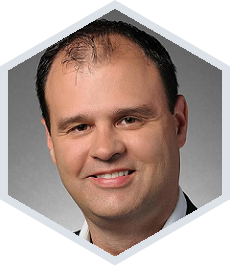





You've likely seen a dramatic shift over the past decade in the makeup of your sales. Projects are shifting from heavy product content to service-led more complex solutions.
Trying to cut through the hype around this much-written-about transition and understand its real impact on your business can be daunting. However, our recent IPED Channelytics' study on partner profitability provides some good insight.
For this study, we conducted extensive one-on-one interviews with solution providers just like you to peel back the onion on profitablility. Below are some of the critical insights we pulled from your peers.
1. Product margins anchor reliable cash flow.
Your peer partners tell us that networking and security solutions supporting cloud and managed services infrastructure are the product areas driving the most profit and are commanding additional investments. These two solution areas are critical to building "as-a-service" infrastructure, and security, in particular, is commanding high-margins due to the significant investment partners make in hard to find security talent.
Subscription software is emerging as the high-end of discreet product opportunities. Whether due to vendor incentives to shift to a subscription model or the opportunity to bundle subscriptions with other services, subscription software is yielding on average 20% gross margins, compared to 11% for traditional one-time software transactions. Hardware, still a mainstay of many deals, is holding at an average of 16% gross margins, while "hardware-as-a-service" offerings fall short in yielding attractive margins.
Average product gross margins
Source: IPED Channelytics' Partner Interviews — Partner Profitability Study 2019
2. Services drive most partner profit.
Many partners have discovered that differentiation is the key to growth in the solution provider business. Services have become that source of differentiation. Not only are services a way for you to stand out in the crowd and build annuity revenue streams, but they are also a source of considerably higher profit than a products.
So, where are you relative to the margins your peers are enjoying in services? Professional services have been a mainstay of partner profitability for years and reliably deliver on average 40% gross margins. Profit range, of course, depends on managing the scaling issues associated with a people-based business and developing the packaging and methodologies to deliver repeatable services.
Average services gross margins
Source: IPED Channelytics' Partner Interviews — Partner Profitability Study 2019
Managed services are an expanding portion of revenue and tend to deliver slightly higher gross margins than professional services at 43%. Managed services gross margins also have dependencies. A managed services delivery model where the customer owns the technology and the partner maintains the environment is most prevalent. This delivery model represents about 41% of all managed services delivered by partners. Services where the partner owns the infrastructure and operates the environment, however, can provide more profit at scale.
3. Blended business models generate higher operating income.
Blended business models, including managed services, consulting, and product offerings, have become the norm. This adds levels of complexity and cost to your business, but the gross margin impact can be substantial.
IPED estimates that a partner with roughly an 80/20 product to services ratio, would generate approximately 17% gross margin, boosted by services, and ultimately yield a range of 2.5% to 3% operating income. On the other hand, a partner making additional investments in consulting or managed services to build their IP, with a mix of closer to 60/40 in favor of services, could deliver an operating income of about 4.5%. It would also provide a high degree of differentiation in unique service offerings and contribute to the potential "valuation" of the firm.
Bottom-line: Me-too is no longer good enough
Today's dollar of profit serves many masters. Profits are reinvested in managed services infrastructure, the development of unique IP, and used to hire and retain top talent. Solution providers must maintain a financial balance like never before between rewarding sales teams for driving revenue and building a compelling value proposition. In the end these investments lead to one thing — differentiation in a market where me-too is no longer good enough to continue to grow.


